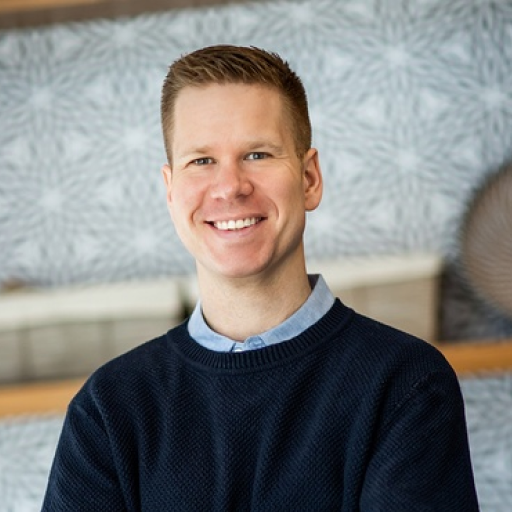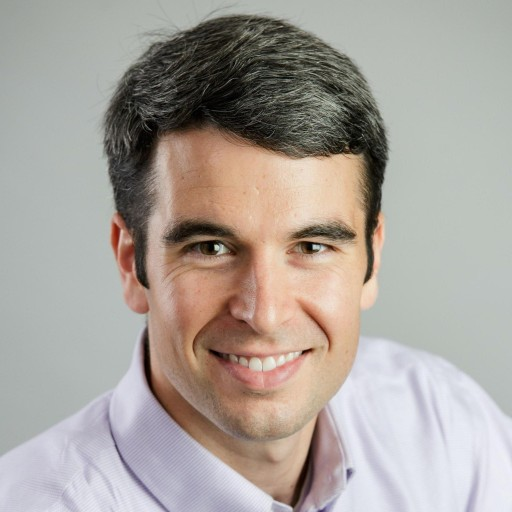The Short-ish of It
- We've been trying to figure out how to use our part-time availability effectively, and what "effectively" even means.
- Dan read Slow Productivity and encouraged Harrison and I to read it too. We discussed it on hiking book club during our most recent Summit which capped off our summer.
- Slow Productivity, among a lot of other useful framing devices, describes “missions:” major foci of your life, not bounded by time, where you place attention and energy, in some shared broad context.
- Within Go Between: consulting for others; our product development; audience building.
- Within ourselves: our families; potentially some set of our hobbies, but none of us are currently investing much time in our banjo playing, or marathon training, or fiddle leaf fig propagation.
- Missions have context-switching and overhead/maintenance costs, so having fewer missions is better. Ideally one; realistically two or three.
- We think we can do two missions within Go Between. One mission is consulting because we like working with fun and interesting clients, and because we have three houses, two dogs, one cat, and 5.89 children to take care of while we work on our product business.
- We really like working directly together, so rather than divide Go Between's other missions among ourselves to work in parallel, we're picking one to focus on collectively.
- In order to still make progress in all of the missions that we're interested in pursuing, we're going to set aside a certain amount of time to focus on each in turn.
- These time blocks are going to be about six weeks each, but we'll allow this to vary a little bit.
- We call them “Cycles” which is not our original term.
- We're starting (continuing, really) with audience building.
- Everything old is new again and you should really read Range if you haven't.
The Longer of It
When I have an epiphany I feel like 90% of the time the realization is something I already know and, often, have even used in some other context in my life. I think this might be something of a loose requirement for epiphanies because occasionally they do come out of nowhere. But having some connection to life-changing information is a strict requirement, so often an epiphany is the slow culmination of several years of conversations, and books I've read, and things I've tried before. I think this is why having a diverse set of experiences is so important. You really should read David Epstein's Range.
Personal philosophy corner aside, Dan, Harrison, and I recently had an epiphany about our work at Go Between: we're collectively a little too busy and a little too unfocused. While we do enjoy the time that we spend in consulting with external clients, owning our own time outright is still our ultimate goal. We'd been working toward this in various fits and starts: our first attempt at a product, Marginal; experimenting with a product announcement marketing page; creating a tiny slack app; building an audience. It's been slow going.
Slow going is still going
To say that it's been slow going is unequivocally true; to say that it feels like we're not going anywhere at all is something we've actually said in our virtual coffee chats. But we are going, it's just hard to see sometimes.
Dan started reading Cal Newport's Slow Productivity a few months ago and rediscovered a profound metaphor: progress is like the many small drops that fill a large bucket. It's hard to feel progress each day, or each week, because progress is not being made on those timescales. Feeling progress can take months, or years, or decades. But, also, progress is happening each day as long that bucket is getting filled a bit at a time.
Progress is like the many small drops that fill a large bucket. It's hard to feel progress each day, or each week, because progress is not being made on those timescales.
Maybe my epiphanies are really made of broad common wisdom that, eventually, I figure out how to incorporate (or reincorporate) into a specific moment of my life. Regardless, Cal Newport had sparked one for Go Between — and he had a few more thoughts for us.
How to fill a bucket
We recently had a company Summit in Saugatuck, MI, and made it a point to discuss Slow Productivity while hiking around Tallmadge Woods and Saugatuck Dunes State Park. While trudging up and down sand dunes we chatted about how to fill our progress bucket and, relatedly, Cal Newport's concept of “missions.”
My interpretation of a mission is that it's an intentional area of focus where I put attention and energy in an ongoing manner. A mission has a specific context that binds its projects and tasks together into a unified effort and brain-space. The intentional time we spend with family is a mission for Dan, Harrison, and me. Go Between is too diffuse to be a mission, but our focuses — consulting, product development, audience building — are each missions themselves.
A mission has a certain amount of maintenance that goes with it, and a certain context-switching cost. Imagine that you're filling your cupped hands with water flowing from a hose, and you are distributing each careful cup among one or three or five buckets. Each bucket has a different lid to navigate. A bit of water sloshes out across the uneven ground as you walk from one to another. Fewer buckets means less waste. Ideally you have one mission in life, but realistically you might be able to get it down to two or three. This is much better than trying for five.
Ideally you have one mission in life, but realistically you might be able to get it down to two or three. This is much better than trying for five.
Choosing missions
Cal Newport doesn't really discuss missions in the context of personal life, but we collectively believe that it's important to be intentional about the time we spend with our families. So within this framework we treat taking our kids to the zoo, and going on dates with our partners, and petting our animals on their small heads as a mission which is as important as any other. From within Go Between, we find that our consulting work remains an enjoyable and necessary mission. We are each left with one available slot.
Dan, Harrison, and I very much enjoy working directly with one another. This is, not incidentally, why we started a company together. We have worked collaboratively on a shared goal before — implicitly — when Marginal was our only project. We've gone solo, too, on blog post writing, on product marketing, on slack plugin creation.
In our mobile book-club discussion, while walking in the sand along the vast beach of Lake Michigan, we found that we are not interested in delegating missions and working in isolation. We've been writing and posting on a weekly cadence for a little while now and we figured that continuing this effort, to build an audience, was a good place to start our explicit and collective focus.
What about everything else
We think about building an audience like this: "wouldn't it be easier to launch a product if folks on the internet actually knew that Go Between existed?" Yeah, probably. And while having an audience supports a number of efforts — in addition to serving as an excuse to spill our thoughts out on to the internet — if one of our goals is to generate product revenue, then we'll eventually also have to build a few products to launch. How do you do three or five or seven things? One at a time.
The other thing about epiphanies is that they're rarely novel. Jon Yongfook wrote about flipping between building and marketing activities on a weekly basis, which works wonderfully if building and marketing are the sole weekly missions. We're splitting our work at about 75% consulting and 10-25% alternate mission time (0-15% gratefully spent in early Fridays, appointments, interruptions, errands), so context-switching on a weekly basis for this second mission would fill no buckets. In previous employment we felt a similar pinch: to do substantive work by decomposing tasks into weekly or bi-weekly sprints where focus might change at any time felt impossible. Dan discovered Basecamp's “Shape Up,” and for a while our product and engineering team worked in four or six week cycles.
This was an exceptionally nice way to do professional work and, though we lost the practice for a while, we have decided that it's time to start it again.
The Grasshopper and the Ants
The most common advice about building an audience is to maintain a consistent content publishing schedule. A post each week will start to gain traction eventually. A post each week for while and then a six or twelve week absence will probably flounder. Cycling into audience building activities means that Go Between will eventually cycle out and into another activity.
It's a little late in a long post for a new metaphor, and so I'll just say that it's the goal of our first cycle to both maintain our publishing schedule and also build up a large enough backlog such that we can continue posting weekly while we turn the majority of our attention to product development or another of our missions in the next cycle.
Do fewer things; work at a natural pace; obsess over quality.
So here is our epiphany, collected. As Cal Newport says: do fewer things; work at a natural pace; obsess over quality. Do you have an epiphany you'd like to share? We'd love to hear it in the comments below.
Thanks for your time and attention.
Note: While reading this post you might think, "Metaphorically, shouldn't the icons be Ants instead of Grasshoppers?" You would be correct except that we find the grasshoppers to be a cuter article adornment.


